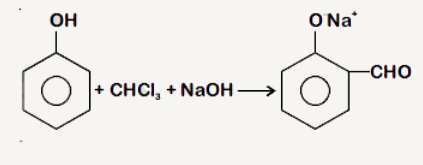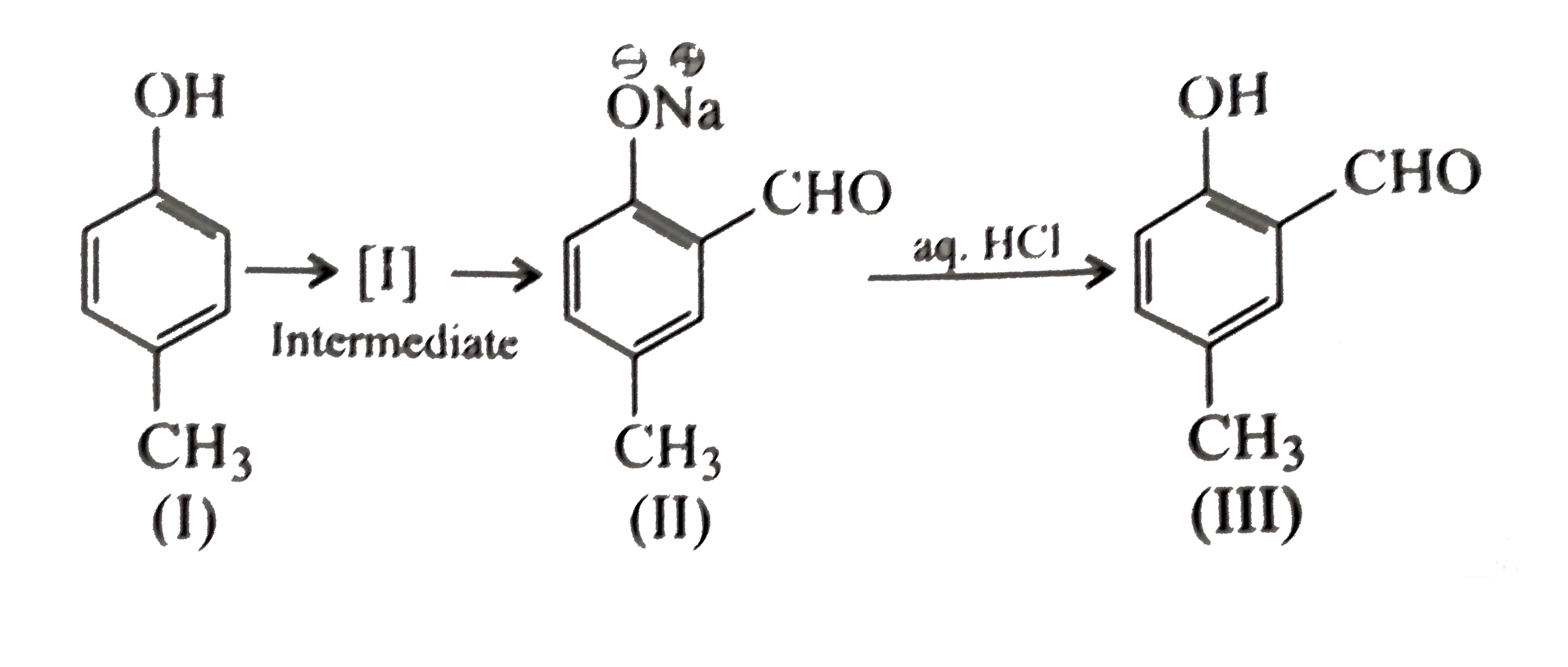In the reaction

The electrophile involved is
Dichloromethyl anion (⊕CHCl2)
Formly cation (⊕CHO)
Dichloromethyl cation (⊕CHCl2)
Dichlorocarbene (:CCl2)
The correct Answer is:D
It is Reimer-Tiemann reaction, The electrophile formed is :CCl2 (Dichlorocarbene) according to the following reaction
CHCl3+OH−⇔Θ∗CCl3+H2O
Θ∗CCl3→:CCl2Electrophile+Cl−
Similar Practice Problems
- Question 1 - Select One
Consider the following reaction,

The electrophile involved in the above reaction isAdichloromethyl cation, +CHCl2Bformyl cation, +CHOCtrichloromethyl anion, ¯¯¯CCl3Ddichlorocarbene, : CCl2 - Question 1 - Select One
In the sulphonation of benzene, the electrophile involved is:
AHSO−4BSO3CSO2DSO2−4 - Question 1 - Select One
In a Friedel-Crafts reaction, the electrophile is:
ACl−orX−BCH+3orCH3CO+CCH3ClDCH3COCl - Question 1 - Select One
C6H5OH+CHCl3+NaOH→ salicyladehyde The electrophile involved in the above reaction is.
Adichloromethyl cation (⊕CHCl2)Bdichlorocarbene (:CCl2)Ctrichloromethyl anion (¯¯¯CCl3)Dformly cation (⊕CHO) - Question 1 - Select One
Reimer Tiemann reaction is an electrophillic substitution reaction in which the electrophile is
A^+CCI3B^+CHCI2C:CCI2Dnone of these - Question 1 - Select One

Reimer-Tiemann reaction introduces an aldehyde group on to the aromatic ring of phenol, ortho to the hydroxyl group. Thi reaction involves electrophilic aromatic substitution. It is a general method for the synthesis of substituted salicylaldehydes as depicted below:
Q. The electrophilic in this reaction is-A:CHClB.⊕CHCl2C:CCl2D∗CCl3 - Question 1 - Select One
Reimer-Tiemann reaction introduces an aldehyde group, on to the aromatic ring of phenol, ortho to the hydroxyl group. This reaction involves electrophilic aromatic substitution. This is a general method for the synthesis of substituted salicyladehydes as depicted below.

The electrophile in this reaction isA: CHClB+CHCl2C:CCl2DCCl3
Similar Questions
C6H5OH+CHCl3+NaOH→ salicylaldehyde The electrophile involved in the above reaction is.
View SolutionReimer -Tiemann reaction introduces an aldehyde group on to the aromatic ring of phenol, ortho to the hydroxyl group. This reaction involves electrophilic aromatic substitution. This is a general method for the synthesis of substituted salicyladehydes as depicted below.

The electrophile in this reaction isView SolutionReimer-Tiemann reaction introduces an aldehyde group on to the aromatic ring of phenol, ortho to the hydroxyl group. This reacrtion involves electrophilic aromatic subsititution. It is a general method for the synthesis of subsituted salicyladehydes as depiced below:

The electrophile in this reaction is:View Solution

